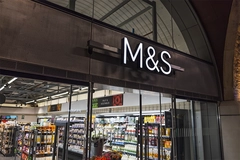
- Industry news
Industry news
- Category news
Category news
- Reports
- Key trends
- Multimedia
- Journal
- Events
- Suppliers
- Home
- Industry news
Industry news
- Category news
Category news
- Reports
- Key trends
- Multimedia
- Events
- Suppliers
Coatings and fillings: Cargill chocolate facility tackles cocoa sector challenges

Cargill has recently increased the capacity of its coatings & fillings plant by 60% in Deventer, the Netherlands, to help its European customers meet today’s chocolate trends and mitigate some of the escalating challenges facing the cocoa and chocolate industries currently.
Deventer is the only Cargill site in Europe devoted exclusively to the production of coatings and fillings, which the company says can provide an innovative solution for customers navigating a volatile market.
The chocolate industry has been facing major challenges this year as global cocoa prices have increased amid adverse conditions, including volatile El Niño weather patterns and disease-affecting yields in key cocoa-growing regions, including West Africa, which supplies about 70% of the world’s cocoa.

Meanwhile, Cargill’s range of coatings offers varieties of mouthfeel, flavor release and texture, delivering a sensorial experience that is less cocoa-dependent.
Michiel van der Bom, product line director, Cocoa & Chocolate, Food Solutions EMEA, speaks to Food Ingredients First about this latest increase in capacity and some of the wider consumer demands Cargill is seeing for specialty confectionery offerings.
How has the recent increase in capacity of coatings and fillings at the plant in Deventer, the Netherlands, impacted production?
Van der Bom: At Cargill, we are building our capabilities to ensure that our customers can meet today’s and tomorrow’s market trends. The expansion of our Deventer production facility has helped increase volume of our coating and fillings production by 60%, helping us to better serve European customers by offering enhanced product variety, meeting specialized dietary preferences and ensuring faster delivery times.
The dedicated facility also enhances quality control by streamlining processes specific to coatings and fillings, reducing contamination risks and ensuring consistent product quality. For customers, this translates to a reliable supply of high-quality, innovative products that meet diverse consumer preferences, ultimately boosting satisfaction and loyalty in the competitive confectionery market.
What were the key drivers behind this increase in capacity of coatings and fillings? And how do they provide an innovative solution for navigating a volatile market environment?
Van der Bom: These are dynamic times for the chocolate market, with the disruption in cocoa bean supply leading to a global price spike. By creating coatings and fillings that offer a rich sensorial experience with less cocoa, Cargill can help its customers mitigate risks by offering alternative ingredients, as a part of its wider portfolio, that maintain high quality and sensory appeal. This ensures that consumers can enjoy indulgent experiences without compromising on taste or sustainability.
 The upgraded facility features a no nuts line and a separate hazelnut line.In addition, the upgraded facility features a no nuts line and a separate hazelnut line, plus many other options like low sugar and no palm.
The upgraded facility features a no nuts line and a separate hazelnut line.In addition, the upgraded facility features a no nuts line and a separate hazelnut line, plus many other options like low sugar and no palm.
Can you detail the company’s line of coatings and how they help boost mouthfeel, flavor release and texture?
Van der Bom: Not only are coatings and fillings more flexible than chocolate when it comes to color, flavor and other sensorial characteristics, but they also provide a unique opportunity for food manufacturers to include positively perceived ingredients and features to labels which align with broader consumer trends. For example, coatings can offer an opportunity to highlight the addition of beneficial substances, such as fiber, proteins or minerals, to achieve nutritional targets. They also provide third-party certification to satisfy a growing demand for more sustainably produced products.
Our innovation team at Deventer works closely with Cargill’s House of Chocolate to tap into these trends and develop visually exciting and sensorial innovations for both new product development and product enhancement. Our customers rely on this know-how to aid new product development and ensure that existing product enhancements come to life, by making use of our extensive and flexible facilities to create an abundance of recipes.
What are your expectations for the cocoa/chocolate sector for the rest of the year and into 2025?
Van der Bom: Over the coming year, we expect food manufacturers to increasingly turn to ingredients and practices that can withstand market challenges, which is why we view great potential within the coatings market. In terms of consumer demand, respect for the classic flavors and tastes will remain. We also anticipate that traditional mealtimes may be blurred, creating new opportunities for grazing formats with innovations such as little balls and bite formats, creating the perception of abundance.
What are some of the current wider consumer demands in specialty confectionery offerings?
Van der Bom: Right now, the European chocolate market continues to grow at a steady 1-2% per year. However, in emerging markets, including the APAC and Middle East regions, even higher growth is expected in the chocolate and compound markets providing additional opportunities to Cargill to grow in those regions.
But there are some nuances here. While demand for chocolate, compounds and decorations is projected to increase, growth is expected to be even stronger in specialty segments like gourmet, vegan and low in sugar chocolate products.










